Xiaomi, well known as a giant in the smartphone market, has decided to compete for the attention of high-end technology enthusiasts by presenting a MiniLED backlit television. Model S MiniLED 2025 looks really impressive on paper. A huge number of dimming zones ensures excellent contrast, and the brightness, reaching impressive values, can impress in both high-quality HDR materials and older SDR. The TV performs excellently where motion smoothness is key. The 120 Hz panel and low input lag make it a good choice not only for sports fans but also for gamers. Support for features like ALLM or GameBar further enhances the gaming experience. Google TV on this television works as it should – fast, smoothly, without unnecessary stutters, which we couldn't say about the model A Pro 2025. Additionally, with such a vast application library, it will satisfy even the most demanding users. However, not everything looks as good in practice. Despite solid hardware specifications, the TV has its issues. The biggest problem lies in the algorithms managing the dimming zones, which can be quite annoying when watching movies in the evening. The operation of individual zones is too visible in dynamic scenes, which can effectively draw our attention away from the image. Problems also arise in more demanding HDR scenes. Small, bright elements often lose brightness, which spoils the effect that should be provided by the highest quality image. The system is also not free from shortcomings – image enhancement features in lower quality materials work unevenly, and some options in Google TV are poorly translated or even untranslated. Xiaomi S MiniLED 2025 has enormous potential, but in its current form, it seems underutilized. It is clear that Xiaomi wanted to create something really good, but several significant shortcomings make the final effect mixed. A device with high aspirations that needs better software to truly shine. It is an ideal television for brighter rooms, where high screen brightness plays a key role, and the issues with local dimming become less noticeable. It will also work perfectly as a screen for gamers and for those who value versatility and functionality in the Google TV system.
- Matching (Score)
- Our verdict
- TV appearance
- Where to buy
- Contrast and black detail
- HDR effect quality
- Factory color reproduction
- Color reproduction after calibration
- Smoothness of tonal transitions
- Image scaling and smoothness of tonal transitions
- Blur and motion smoothness
- Console compatibility and gaming features
- Input lag
- Compatibility with PC
- Viewing angles
- TV efficiency during daytime
- Details about the matrix
- TV features
- Apps
- Playing files from USB
- Sound
Xiaomi S Mini 2025 vs Samsung Q8F
Direct compare
Check the best price offer:
Samsung Q8F
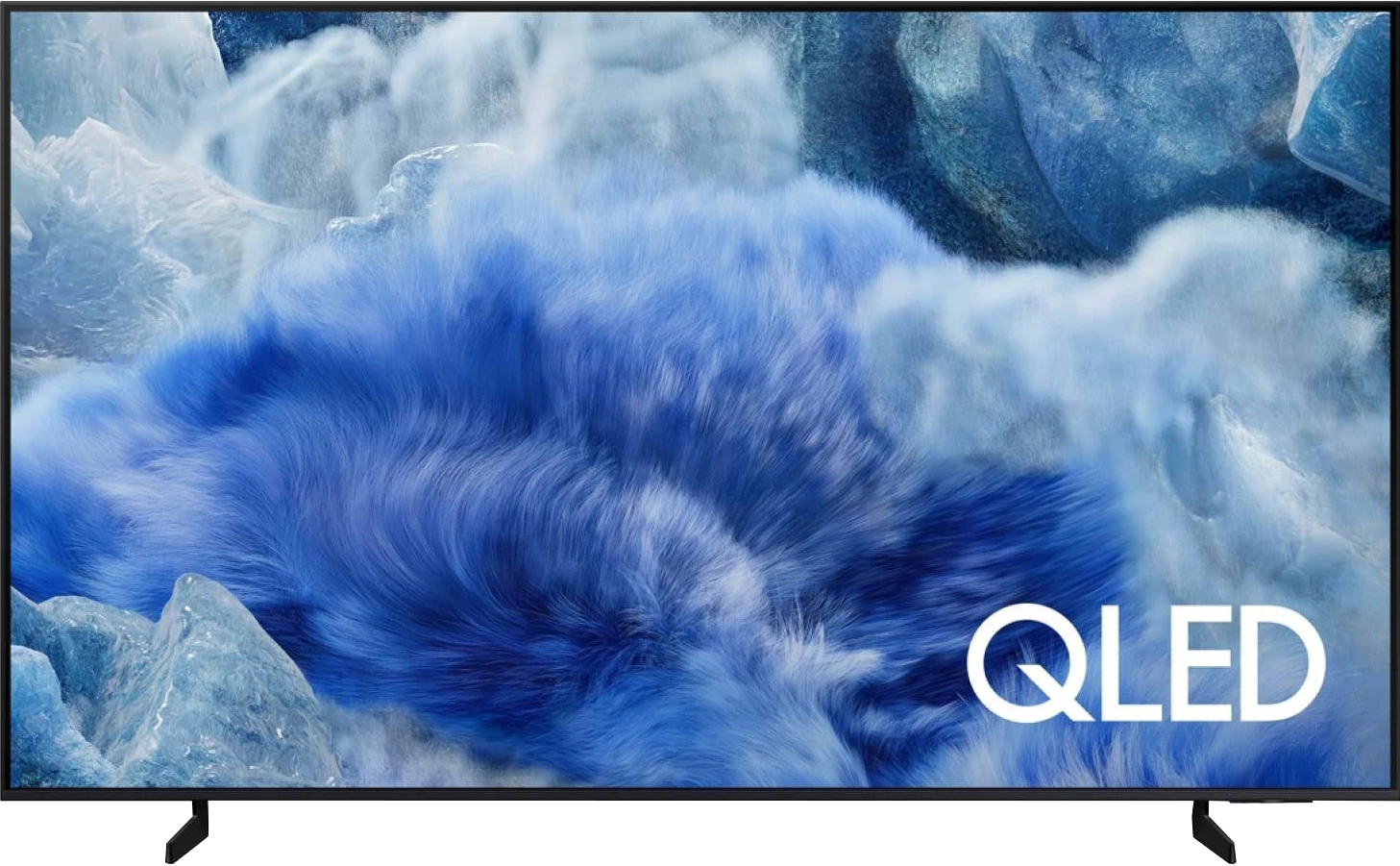
Panel type: LCD VA
Resolution: 3840x2160
System: Google TV
Model year: 2024
Complete the survey to find out the result

Panel type: LCD VA
Resolution: 3840x2160
System: Tizen
Model year: 2025
Complete the survey to find out the result

Overall rating
7.1
6.3
Movies and series in UHD quality
6.4
6.3
Classic TV, YouTube
6.6
6.0
Sports broadcasts (TV and apps)
6.5
5.6
Gaming on console
8.4
7.0
TV as a computer monitor
8.2
6.0
Watching in bright light
7.3
5.6
Utility functions
4.7
7.3
Apps
9.6
8.7
Sound quality
6.8
6.0
Complete the survey to find out what fits your preferences
Advantages
VA panel with MiniLED backlighting – good contrast and deep blacks
High brightness (841 cd/m²) – great visibility even in bright rooms
Support for multiple HDR formats: Dolby Vision, HDR10+
Good motion fluidity - High refresh rate
Low input lag – perfect for gaming
Google TV system – versatile and extensive with wide access to applications
The remote does not require aiming at the screen
Pleasant sound with slight bass
Support for audio formats: Dolby Atmos and DTS:X
Solid contrast thanks to the VA panel
Pretty good brightness in SDR and HDR (up to about 500 nits)
Satin finish handles reflections well
Tizen operating system – fast, intuitive, with a rich selection of apps
Solar remote with USB-C charging
Integration with the SmartThings ecosystem
Great input lag
Good font readability when working with a PC, suitable as a monitor for text work
Adjustable stand on multiple planes
Disadvantages
Errors in the translation of the TV menu
Problems with aggressive dimming algorithms - noticeable in dynamic scenes
Image scaling and tone transition enhancement features are unstable
Heavily limited features for gamers (no VRR in practice, no HGiG)*,
No recording function on USB or PiP
Average digital image processing
*We hope that the promises made in the advertising brochures will be quickly fulfilled through software updates.
Our verdict
Samsung Q8F is quite a successful continuation of the Q67D model. It offers similar picture quality in HDR content, and with a brightness of around 500 nits, it can create an effect that is hard to call average. It is also aided by support for the HDR10+ format, which has been realistically competing with Dolby Vision for some time and provides comparable experiences in many productions. The contrast is also a plus—given its VA panel, it performs solidly and allows for pleasant blacks in movies and series. However, the biggest advantage of the Q8F remains the operating system. Tizen works quickly, provides access to many applications, and integrates well with the SmartThings ecosystem, making it easy to connect the television to a larger network of home devices. Interestingly, the Q8F also has some niche use—thanks to its very good font readability, it works great as a screen for text work. Additionally, the adjustable stand allows the TV to be positioned on practically any desk or narrower TV cabinet. The biggest drawback, in our opinion, is not the image quality itself—because in this price range it's hard to expect miracles—but rather what has happened to the features for gamers. Through updates, options such as VRR and HGiG, which were available even in simpler designs in previous generations, have disappeared. In fact, the manufacturer even boasts about the availability of these features in its catalog. This makes it difficult to recommend the Q8F to anyone planning to hook up a console and expecting full support for new technologies. Thus, the Q8F is a TV that can please—primarily with its design, above-average picture quality, and efficient Tizen system. But at the same time, it shows a step back compared to its predecessor. Let’s hope that Samsung can quickly rectify these shortcomings, as otherwise, even such a successful “everyday” TV may leave some users feeling unsatisfied.
TV appearance




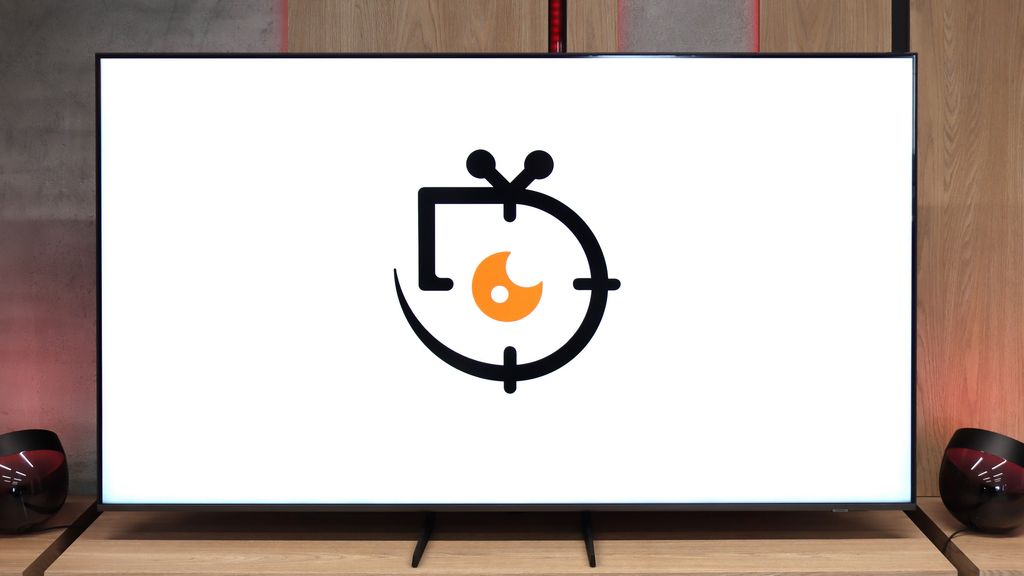
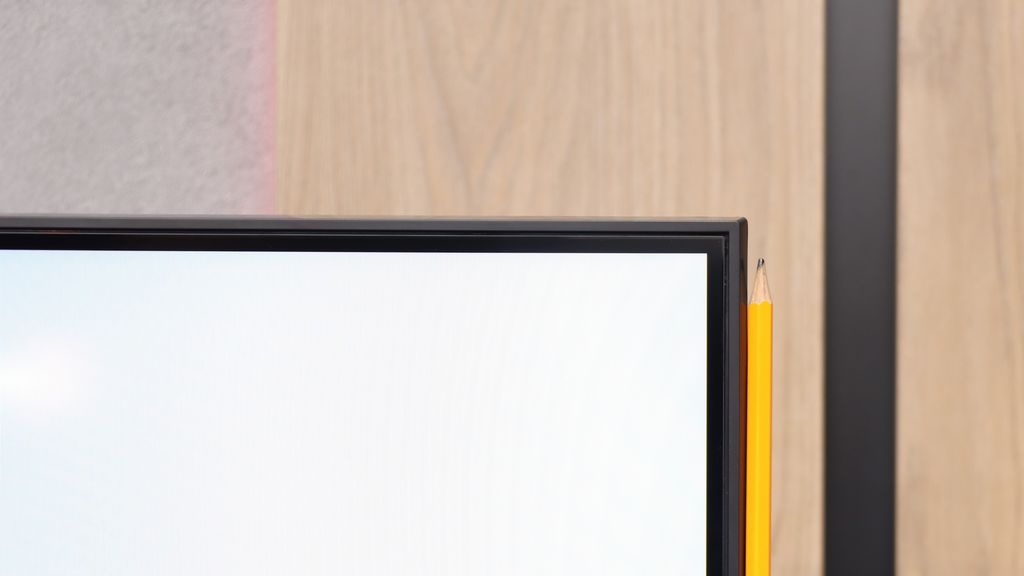
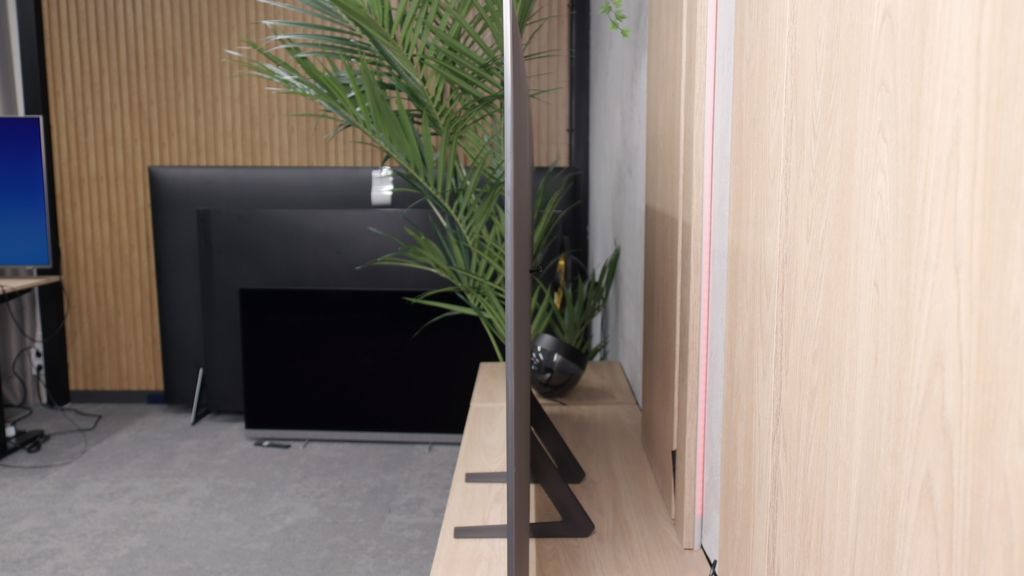
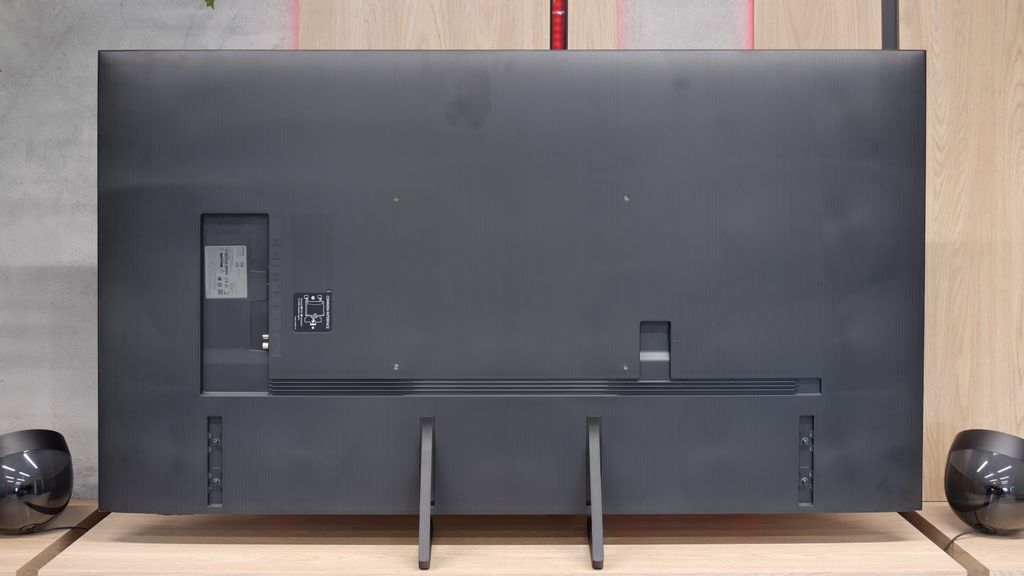
Contrast and black detail
6.8/10
5.5/10
Local dimming function: Yes, number of zones: 308 (22 x 14)
Local dimming function: No
Contrast:

Result
182,000:1

Result
38,050:1

Result
18,300:1

Result
10,150:1

Result
5,450:1

Result
5,200:1

Result
4,650:1

Result
3,650:1

Result
4,100:1

Result
4,150:1
Halo effect and black detail visibility:

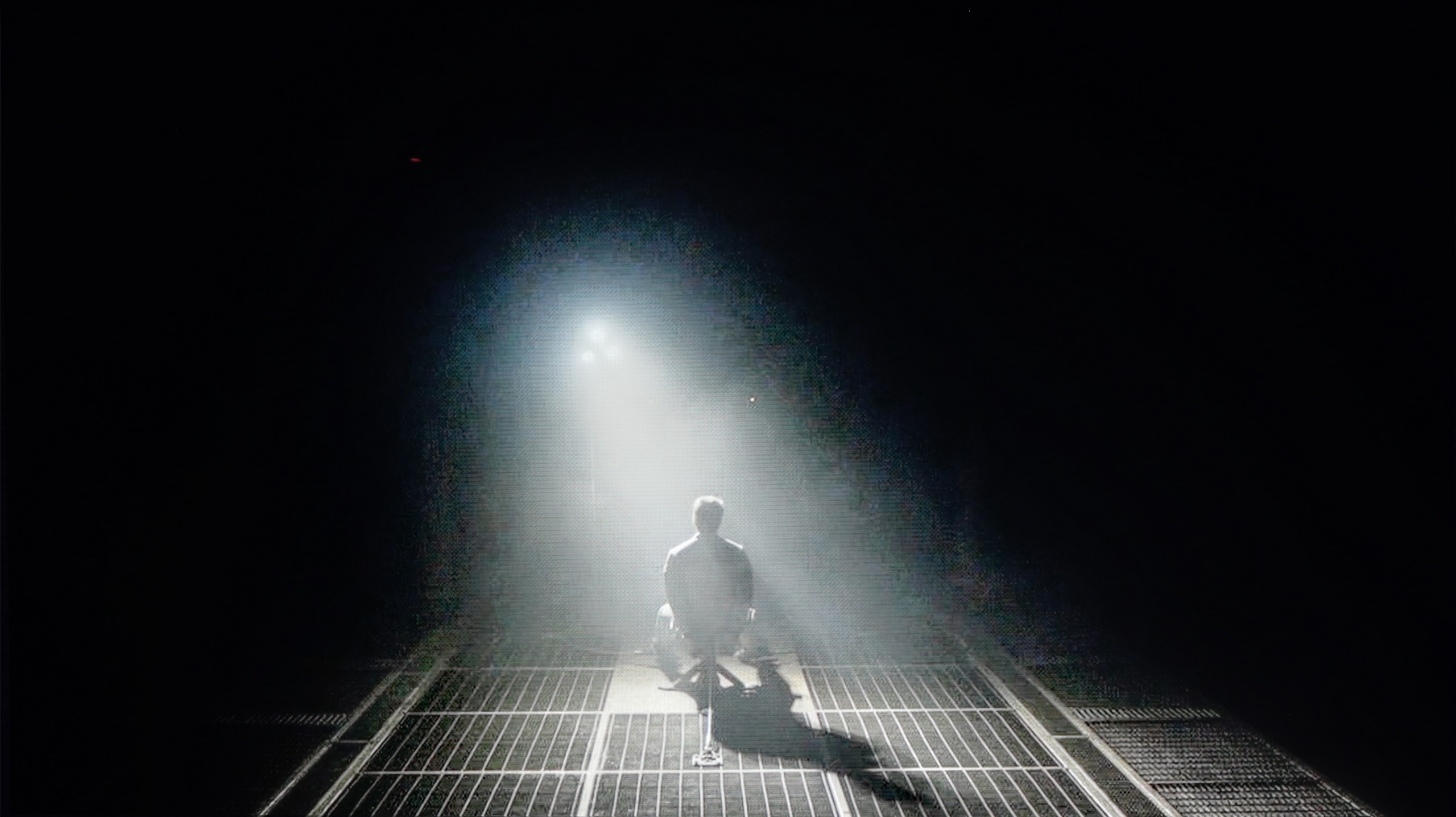
Xiaomi S MiniLED is one of the most affordably priced televisions featuring MiniLED technology available on the market. The model we tested in a 55-inch size is equipped with as many as 308 local dimming zones, which is impressive for such a price. Additionally, it uses a VA panel, which naturally offers significantly better contrast than IPS panels. On static test screens, the television performed excellently, achieving an impressive contrast ratio of 182,000:1 in the film Oblivion. The black levels were deep, and details in both bright and dark parts of the image were clearly separated. However, in more demanding scenes, where the image is dynamic, the situation begins to complicate.
Where lies the problem? The main cause is the local dimming algorithms. Although their effects are promising on static images, during film playback – that is, in the television's natural working conditions – they operate too aggressively. In dynamic scenes, such as those from the tested film, one can observe how individual dimming zones "work and flicker," which detracts from the viewer's sense of image coherence. This effect is particularly noticeable in motion, when bright objects move against a dark screen. As a result, although Xiaomi S MiniLED offers a remarkable contrast on paper, in practice the effect is less satisfying. The aggressive operation of the algorithms diminishes the reception of dynamic scenes, making the television average in this category. It is a good example of how MiniLED technology requires not only good specifications but also proper optimization.
Samsung Q8F uses an LCD VA panel, which immediately puts it in a good position in terms of contrast. By nature, such panels offer deeper blacks than IPS panels, and you can really see this effect here. On test patterns, the contrast maintained a range of about 4000:1 to even 6000:1, which in practice results in a surprisingly engaging picture, especially in a slightly dimmed living room. Of course, this is not the level of LCD screens with local dimming, let alone OLEDs — sometimes the black can shift to a shade of navy blue, and the overall image seems flattened. However, Samsung employs a simple trick: the so-called global dimming, which means dimming the entire screen when a lot of dark areas appear on it. The effect can be impressive but comes at the cost of losing some detail, which may not appeal to everyone. Despite this, the Q8F still presents itself significantly better than televisions with IPS panels, offering solid contrast and blacks that can draw you into the cinematic atmosphere.
HDR effect quality
4.8/10
5.2/10
Luminance measurements in HDR:

Result
852 nit

Result
140 nit

Result
385 nit

Result
97 nit

Result
1126 nit

Result
473 nit

Result
417 nit

Result
457 nit

Result
210 nit

Result
471 nit
Scene from the movie “Pan” (about 2800 nits)


Scene from the movie “Billy Lynn” (about 1100 nits)


Static HDR10


Dynamic: Dolby Vision
Dynamic: HDR10+


HDR luminance chart:
Samsung Q8F
HDR luminance
Xiaomi S Mini 2025
HDR luminance
Since the Xiaomi S MiniLED boasts an impressive number of 308 dimming zones, it was time to see how it performs in HDR tests. Starting with luminance, or the ability to display bright scenes, the television achieved nearly 1000 nits of brightness – a result that can be considered outstanding in this class. However, do these numbers translate into real experiences in movie scenes? In the case of less demanding shots, like those from the film The Meg, the television indeed showed excellent results, reaching up to 900 nits. Such values are impressive and can truly convey the strength of HDR effects.
Unfortunately, similar to the contrast situation, there were issues. When smaller, brighter elements appear on the screen – as in challenging scenes from Sicario 2 – the aggressive operation of the dimming zones spoils the whole effect. Brightness during these moments drops to just 100 nits. This is definitely too little to capture the full magic of HDR. Instead of a dynamic and detailed image, the viewer gets a muted, almost flat impression, which diminishes the enjoyment of the viewing experience.
In summary, if we are looking for a television with high brightness for watching movies during the day, the Xiaomi S MiniLED will easily fulfill that task. However, its inability to precisely manage dimming zones means that watching movies in the evening, especially in demanding HDR scenes, can be more frustrating than satisfying.
In terms of brightness, the Samsung Q8F performs surprisingly well for a television without local dimming. It measures up to 500 nits, which practically means that most movie and series scenes look pleasant, and it definitely cannot be accused of lacking the "HDR effect." In films like Life of Pi or The Meg, the screen was able to glow and deliver light effects at a satisfying level. It struggles more during challenging moments—with dark frames containing single bright points. The global dimming used causes the television to darken the image to maintain deep blacks, but at the cost of detail brightness. This is clearly visible in the scene from Sicario 2, where the helicopter lights dropped to around 200 nits. This is a conscious design decision that gives the impression of deeper blacks but somewhat takes away from the brilliance of individual elements, and this should simply be kept in mind. When it comes to color reproduction, the Q8F utilizes quantum dot technology, which broadens the color range. A DCI-P3 coverage of 91% can be considered a decent result, although it is not a record-breaking achievement compared to other QLEDs.
Factory color reproduction
3.9/10
4.6/10


Factory Mode
After calibration


Factory Mode
After calibration
Xiaomi, like many manufacturers, offers a wide range of picture modes. On the S MiniLED, we can find both IMAX Enhanced and Filmmaker. We conducted our tests in Filmmaker mode, which theoretically is supposed to reference the original image, but the reality turned out to be somewhat different.
Let's start with the test of SDR materials. Here, the television had quite a few problems, especially with white balance. The clearly visible dominance of red made the image appear too warm, and all colors gained a reddish tint. This was particularly noticeable in a comparative scene from the Star Wars movie. The brightness characteristics (gamma) also left much to be desired – instead of a smooth transition, we had a real "rollercoaster," with a visible excessive brightening of the screen.
In 4K materials, the situation looked much better. The white balance, while still not perfect, was much more balanced, with a slight dominance of red and blue, but without excessive influence on the overall perception. The EOTF curve (responsible for brightness in HDR) showed some brightening in the brightest parts of the image, which was noticeable, for example, in the test scene from the Pan movie that we described above. These brightening effects can disrupt image precision, but in 4K, the overall effect was much more acceptable than in SDR.
Although the Xiaomi S MiniLED can positively surprise in 4K materials, its factory settings in SDR require significant adjustments, especially in terms of white balance and brightness. It is definitely a television that would benefit from calibration.
We decided to check the Filmmaker mode because it provided us with the best picture right out of the box. However, this does not mean it was perfect. The white balance had too much blue and red tint, causing the white to take on a slight purple-pink hue. Such an imbalance affected the visibility of practically all colors, as can be seen in the comparison photo below. The brightness characteristic in SDR content was quite well adjusted, although in HDR materials, we noticed that the television did not always manage its global dimming—at times, the screen was too dim, while at other times it suddenly brightened. Fortunately, issues related to colors can be effectively corrected with calibration tools, so we decided to get to work.
Color reproduction after calibration
8.4/10
7.8/10




Xiaomi S MiniLED 2025 is a television that gains a whole new life after calibration. The results are truly remarkable and show how much potential this model has.
In SDR mode, the white balance is nearly perfectly aligned. The errors are minimal enough that in many cases they can be considered negligible. This is confirmed by the Colour Checker palette results, where the errors did not exceed 2 ΔE – a result that is indeed quite rare. Gamma also looks very good, although at the beginning of the graph, there are slight brightenings in the darkest elements. However, this is a minor exception that does not significantly affect the image perception.
In 4K HDR materials, calibration also brought visible improvements, especially in white balance. The image looks natural and consistent. However, the brightness characteristic remains a problem. EOTF analysis in film materials shows that the television tends to over-brighten or darken the smallest elements on the screen. This is a result of limitations in the dimming algorithms that we previously discussed concerning HDR and contrast testing. Unfortunately, this is a technical feature of this model that cannot be completely eliminated.
Despite this minor flaw, calibration allowed extracting the maximum capabilities from this television. The image now looks phenomenal, and its quality impresses with every type of material. Xiaomi S MiniLED 2025 demonstrates that with the right settings, it can compete with more expensive models.
After calibration, we managed to correct the white balance almost to perfection. Older SDR content looks stunning — most errors are within a threshold of 2, which is definitely below the human eye's perception limit. In HDR, we also brought the white balance to the correct level, but a different problem arises here. So why are there still relatively large errors in color reproduction? This is mainly due to the limited color palette and the way the television manages brightness. The applied global dimming technique does not give the user control in the settings, so when analyzing the EOTF curve in HDR films, it is clear that the Q8F can independently modify luminance. This can be considered a certain limitation, but despite this, the image after calibration is still much more enjoyable than in the factory version.
Smoothness of tonal transitions
8/10
9/10





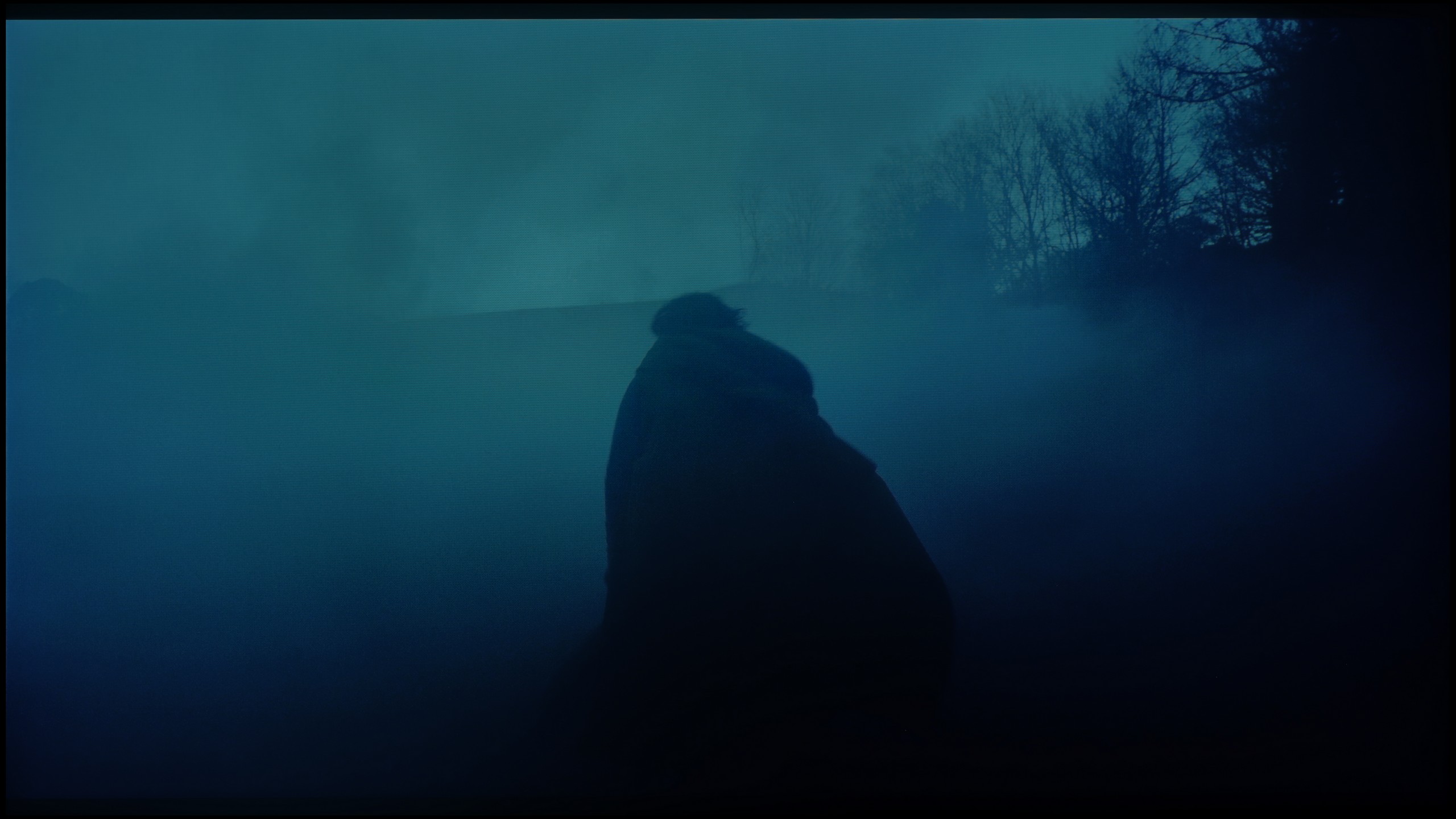






The fluidity of tonal transitions in Xiaomi S MiniLED 2025 is very good. Even in the theoretically most challenging scene with red water, the television performs excellently – we did not notice any significant issues. Minor imperfections appear in scenes such as Kingsman or The Martian, where subtle color transitions can be seen. Nevertheless, Xiaomi stands out in this category, offering one of the best qualities of tonal transitions in its price range. This is definitely a strong point of this television.
The fluidity of tonal transitions in the Q8F is really very good. The TV blends colors very nicely, both in bright segments of the sky and in darker shots, where "steps" in color can easily be visible. Yes, there are occasional errors, but you have to look closely to catch them. In practice, while watching movies or series, the picture looks cohesive and is not distracting with any artifacts. Therefore, the rating in this category had to be high. 😉
Image scaling and smoothness of tonal transitions
6.7/10
5/10
Smooth transition function

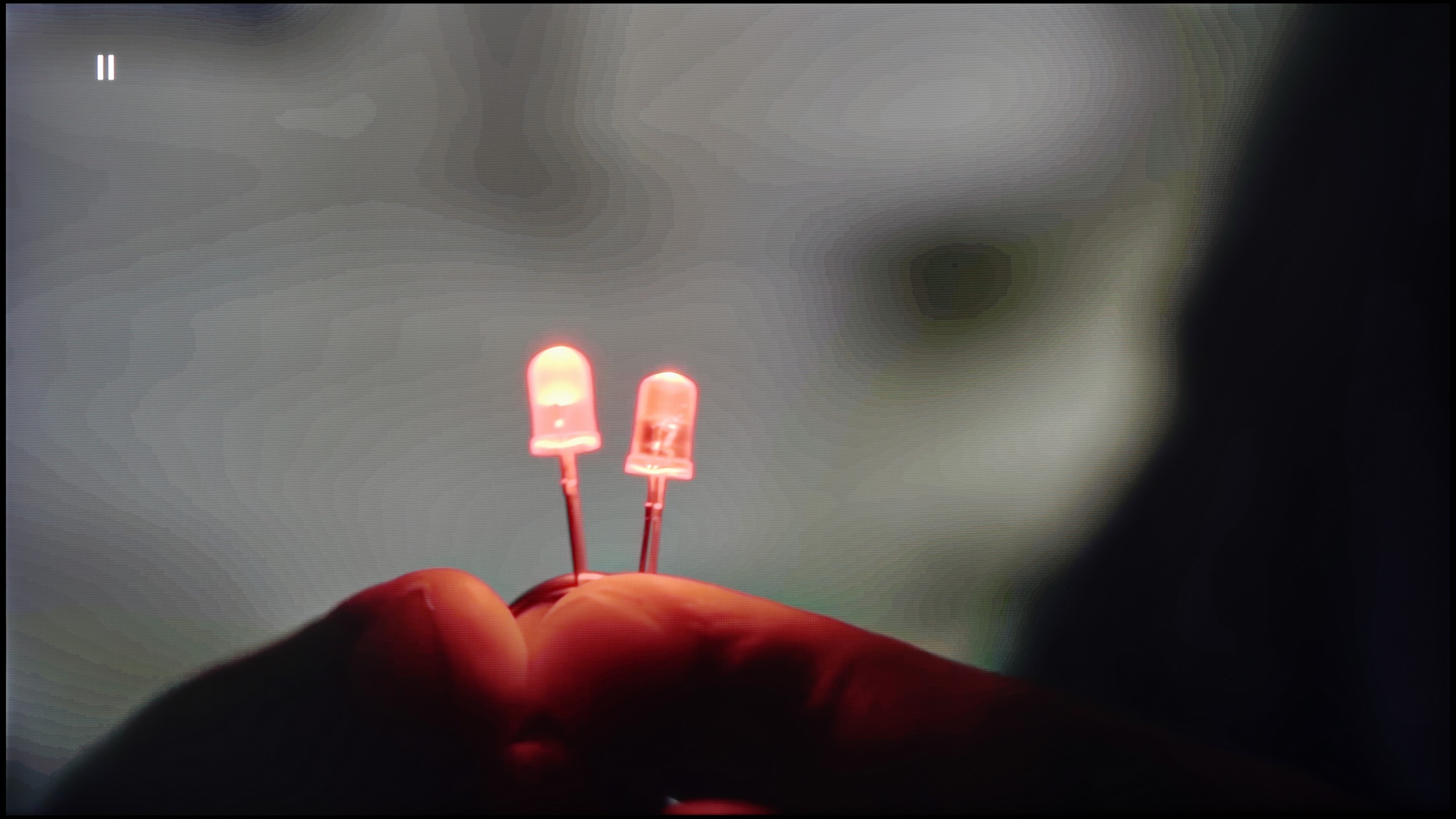
Image without overscan on the SD signal


When it comes to color transitions in lower quality materials like YouTube or television, the Xiaomi S MiniLED is equipped with the "Color Contour Removal" feature. In the "low" setting, it works quite well, but its effectiveness can be uneven. Sometimes it seems like the TV struggles with smoothing, which creates a certain dissonance. On the plus side, we did not notice any visible side effects, although given the instability of this feature, one might suspect that unexpected issues could arise in some situations.
Image scaling also performs average. There is slight aliasing, especially on thin elements like branches, and subtitles can appear a bit jagged. While it may not be very bothersome, a more discerning eye will certainly catch these shortcomings. Overall, most users should be satisfied with the scaling and smoothing quality, but the TV may not satisfy those who expect perfection in every frame.
Let's see how the Q8F handles older content, which often has poor quality. Let's start with the positives: the upscaling, which means raising the image to a higher resolution, works really well. The TV handles both classic television and materials from YouTube without giving the impression that we are dealing with something completely unattractive. Materials in very low resolutions, such as 576p, perform worse — the image can be cropped, and unfortunately, the overscan phenomenon cannot be turned off. However, the digital processing itself looks worse too. The noise reduction function, instead of removing unwanted interference, smooths out almost everything: film grain (which is desirable for many viewers) disappears along with the texture of the image, and the faces of the actors begin to resemble characters from cheap Turkish soap operas. It is therefore hard to consider this option useful — it's best to leave it completely turned off. Perhaps Samsung will refine the operation of this feature in updates, but for now, it’s difficult to regard it as anything other than an unnecessary addition.
Blur and motion smoothness
7/10
5.7/10

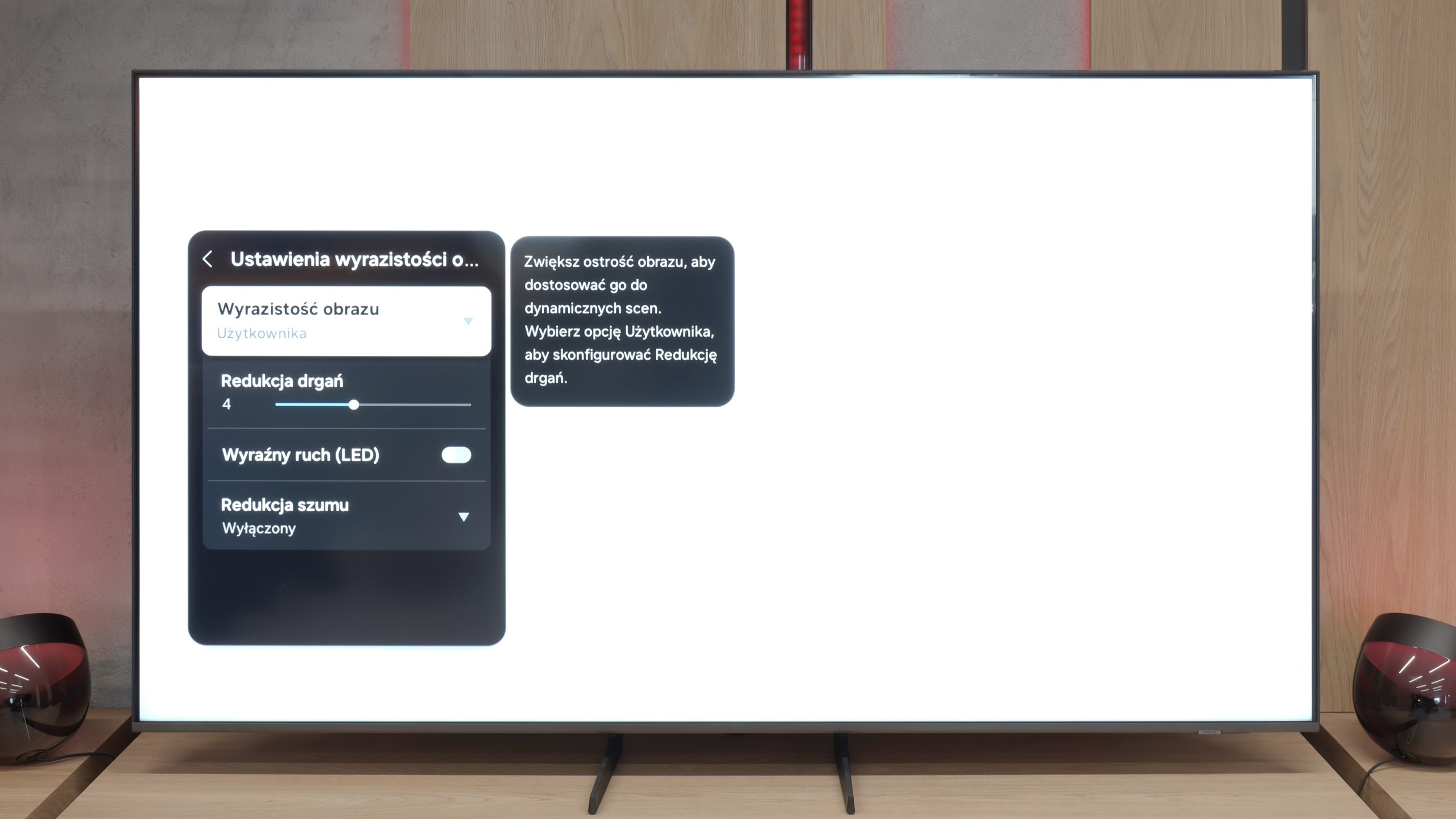
Blur (native resolution, maximum refresh rate):






Blur (BFI function enabled):



Xiaomi S MiniLED 2025 is equipped with a display that refreshes at 4K@120Hz (1080p@240Hz), providing sufficient smoothness for both watching dynamic sports broadcasts and playing the latest games. This level of refresh rate makes the image look smooth, even in the most intense scenes. Additionally, the TV offers a "Motion Smoothing" feature that allows users to adjust the way images are displayed in movies. We can choose a more frame-like effect, typical of cinematic experiences, or a smoother one reminiscent of the so-called "theatrical effect." This way, every user can tailor the settings to their preferences and enjoy smooth images in their favorite content.
Due to the 60 Hz panel, it's hard to call the Q8F a television made for gaming or watching sports. The panel isn't particularly fast, making motion blur clearly visible. If you were counting on spectacular, almost "stadium-like" experiences during broadcasts, you might feel a slight disappointment. Fortunately, in the case of movies and series, Samsung has not abandoned motion smoothing features. This is nothing other than a motion smoother that allows improving the fluidity of productions recorded at 24 or 30 frames per second. Thanks to this, one can decide whether they prefer a smoother, "television" image or to maintain a cinematic quality. It all depends on the viewer's preferences, and the ability to adjust this parameter is undoubtedly a plus.
Console compatibility and gaming features
9.8/10
3.7/10
- ALLM
- VRR
- VRR range48 - 144Hz
- Dolby Vision Game Mode
- Correct implementation of HGIG
- 1080p@120Hz
- 1440p@120Hz
- 4K@120Hz
- Game bar

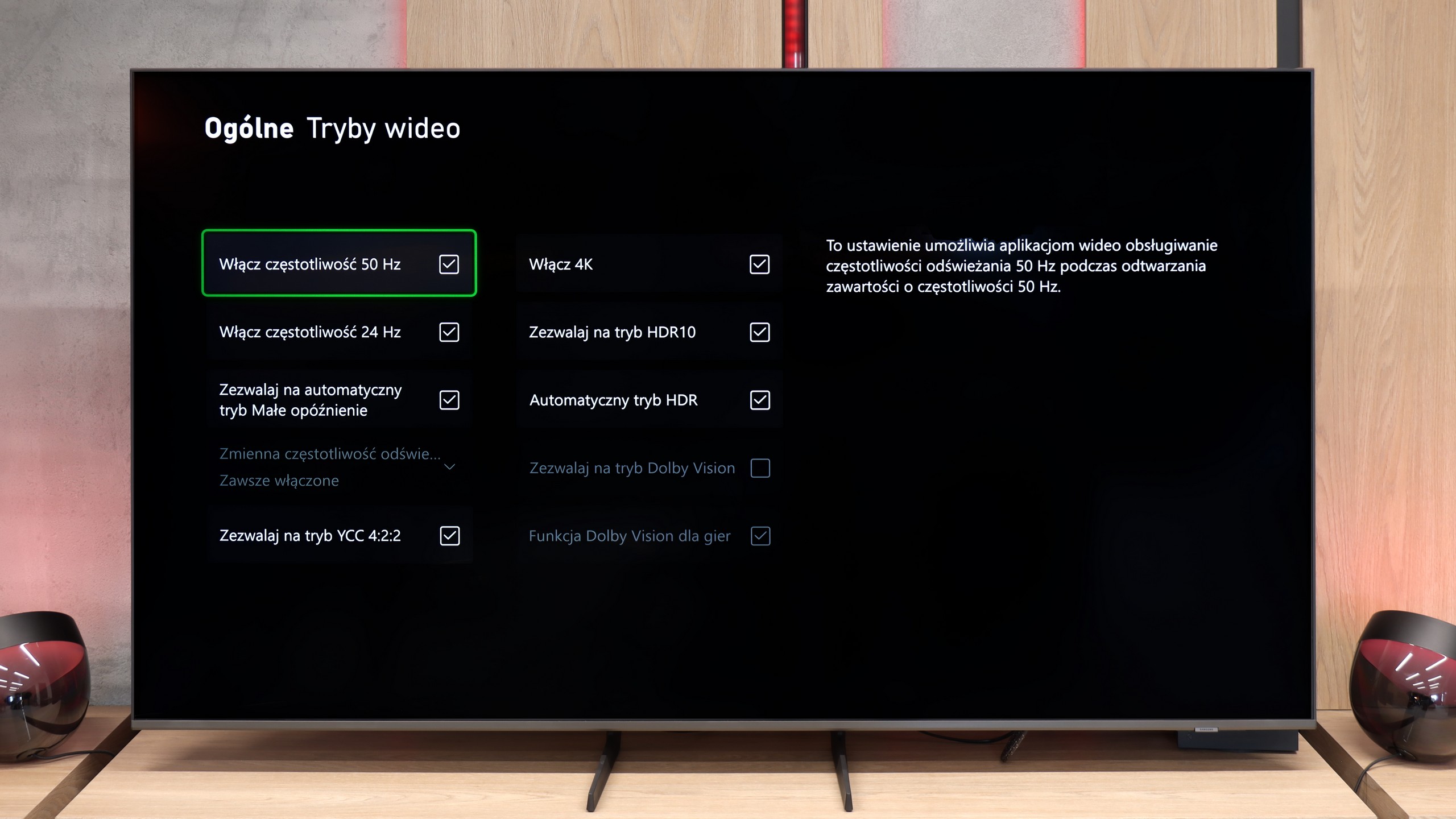

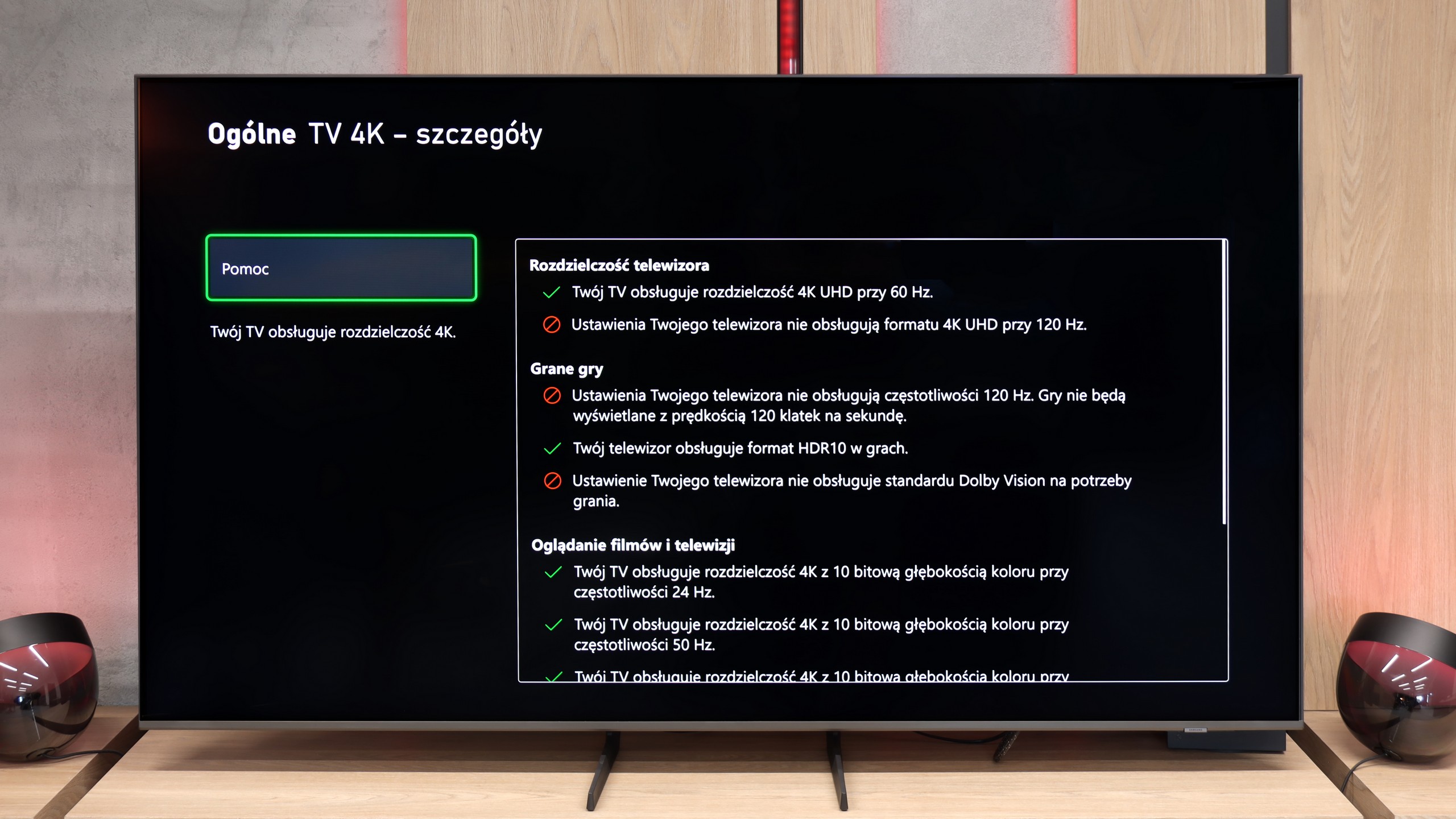

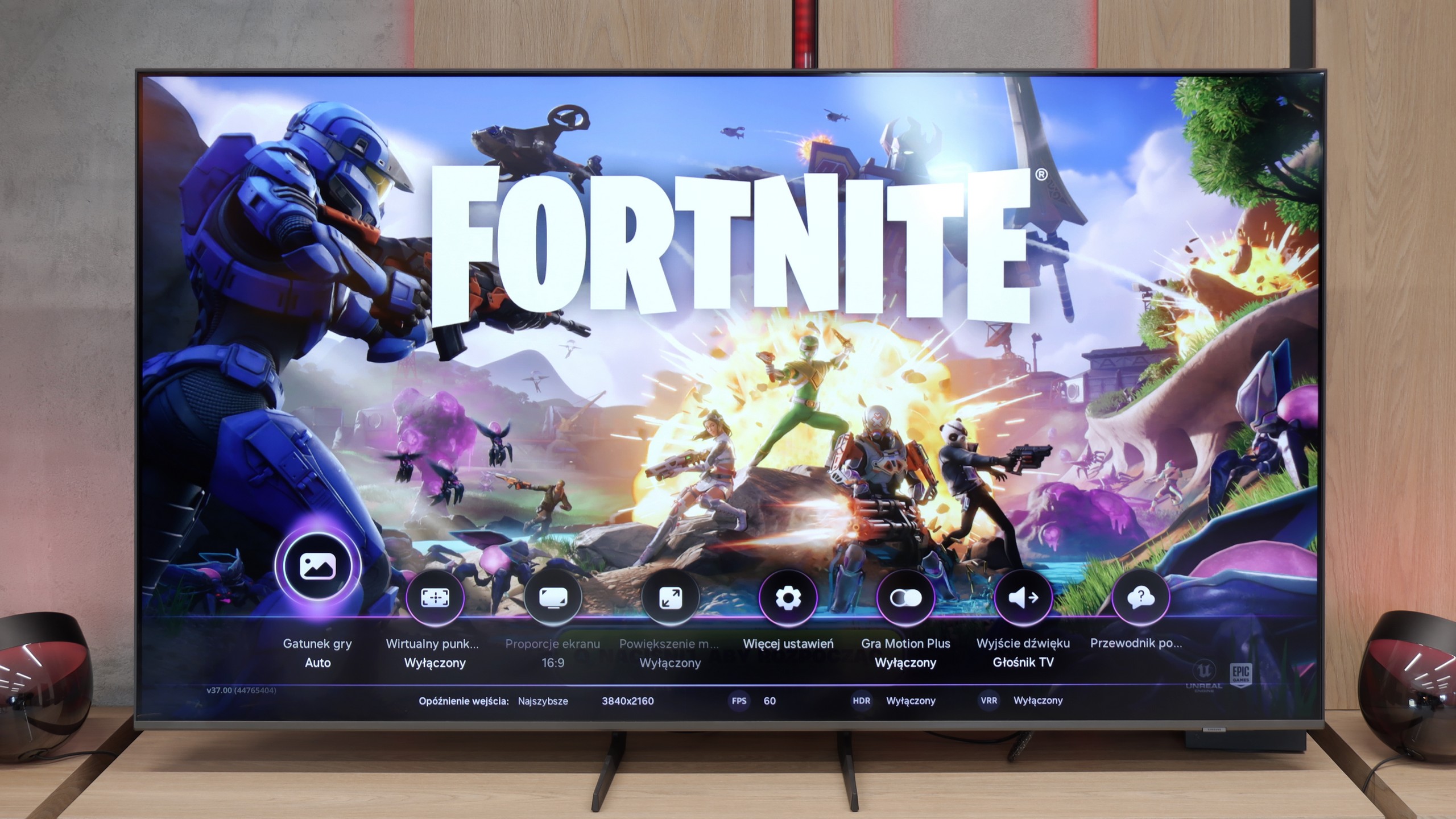

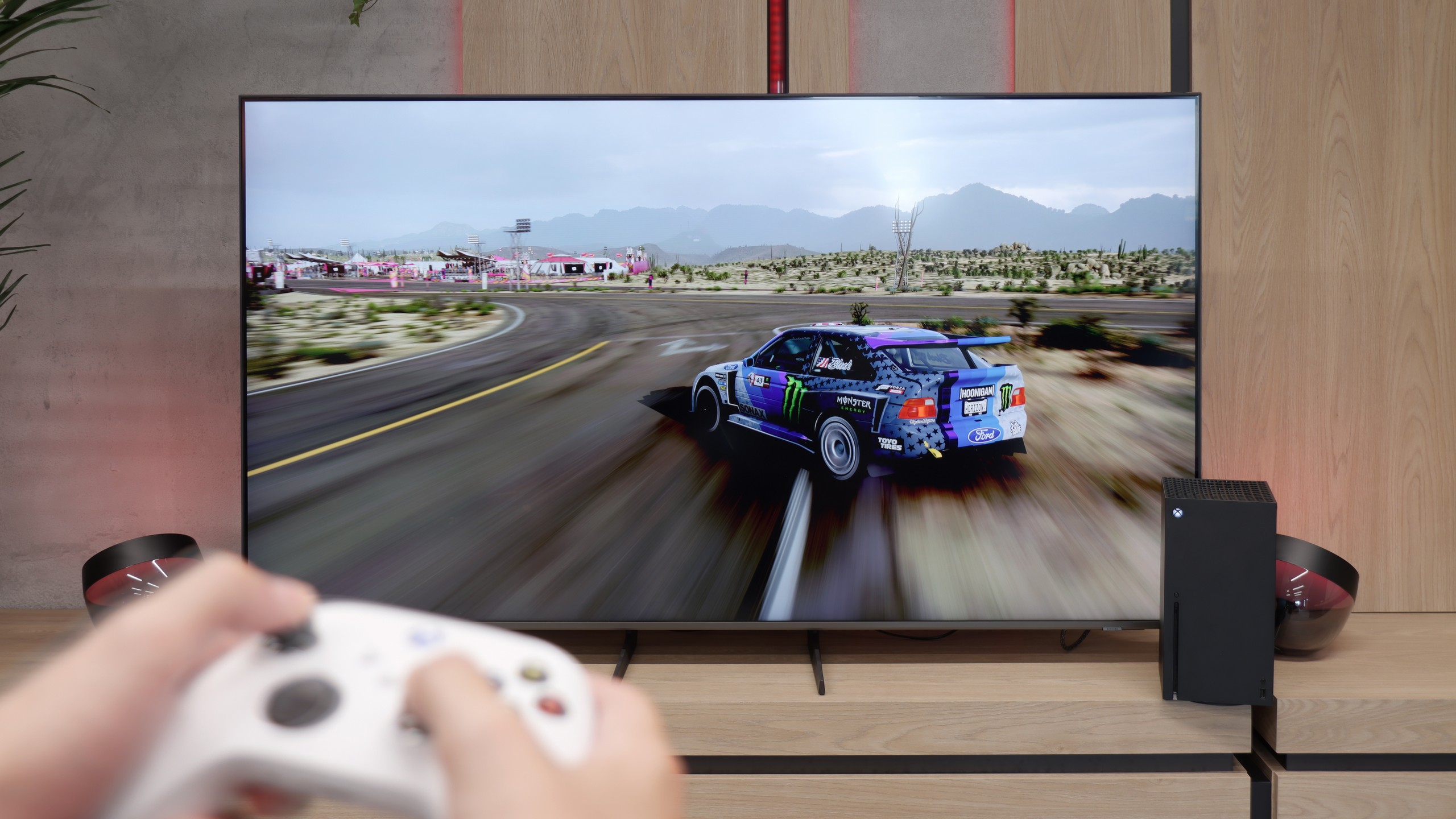
Xiaomi S MiniLED 2025 is a television that has a lot to offer gamers. With two HDMI ports with 48 Gbps bandwidth, we can easily connect modern consoles or PCs, utilizing their full potential. Additionally, the ALLM feature automatically switches the television to low latency mode – something we will appreciate during dynamic games without annoying lags. No matter what we connect, it works smoothly, and the television handles various resolutions well. There is also GameBar, which may not look as impressive as the "bars" from the competition, but makes up for it with practicality. It's a simple settings panel that allows us to quickly change the most important options or check statistics – an ideal solution when time is of the essence.
However, we have to admit that operating the television itself – or rather finding the gaming features – was quite a challenge for us. We approached the Xiaomi S MiniLED 2025 test several times to find all the necessary options. The hidden menu allowed us to discover the "GameBoost" feature, which enables switching the television to 240 Hz mode, activating VRR at 120Hz, and turning on the image in HGIG mode.
In summary, the Xiaomi S MiniLED 2025 is a television that definitely deserves praise in the gaming hardware category. Its rich set of features – 240 Hz mode, VRR, HGIG, and "GameBoost" – provides exceptional gaming experiences. Unfortunately, the intuitiveness of the menu itself leaves much to be desired and may pose a certain challenge for the average user.
It is not entirely clear what Samsung has mixed up this year with its televisions, but the Q8F is not free from all the confusion with updates and shortcomings. While its older cousin, the Q67D, could still be recommended to casual gamers with a clear conscience, it's hard to find a reason to do so here. Aside from the automatic game mode and the attractively designed Game Bar, we practically get nothing that could attract gamers. The lack of proper HGiG implementation is a big problem, especially since function simply disappeared after the 1126 update. The issue with VRR is even worse. Although it is featured in the manufacturer's brochures and appears in the Game Bar, we couldn't activate it. The Xbox Series X console did not allow it to be activated at all, and the option remained grayed out and inactive. It's hard to praise such a television even to casual gamers, which is a shame because Samsung has had a strong bargaining chip in the gaming segment for years.
Input lag
9.8/10
9.9/10
SDR
HDR
Dolby Vision
Input lag in Xiaomi S MiniLED 2025 is one of its biggest advantages. 8 ms for 120 Hz content and 17 ms for 60 Hz is an outstanding result that will satisfy even the most demanding gamers. Moreover, the Dolby Vision mode in games deserves praise. Unlike many competing models, Xiaomi maintains low input lag even in this mode, making it an excellent choice for fans of high-quality HDR gaming experiences.
Fortunately, when it comes to gaming, Samsung didn't try to "enhance" anything, and the input lag remained at an excellent level. Results oscillating around 10–15 ms mean that the delays are practically imperceptible. The controls are instant, and the responses from the console or computer appear on the screen with no noticeable delay. In this regard, the Q8F performs exceptionally well, and it's hard to find any faults with it.
Compatibility with PC
8.2/10
6/10

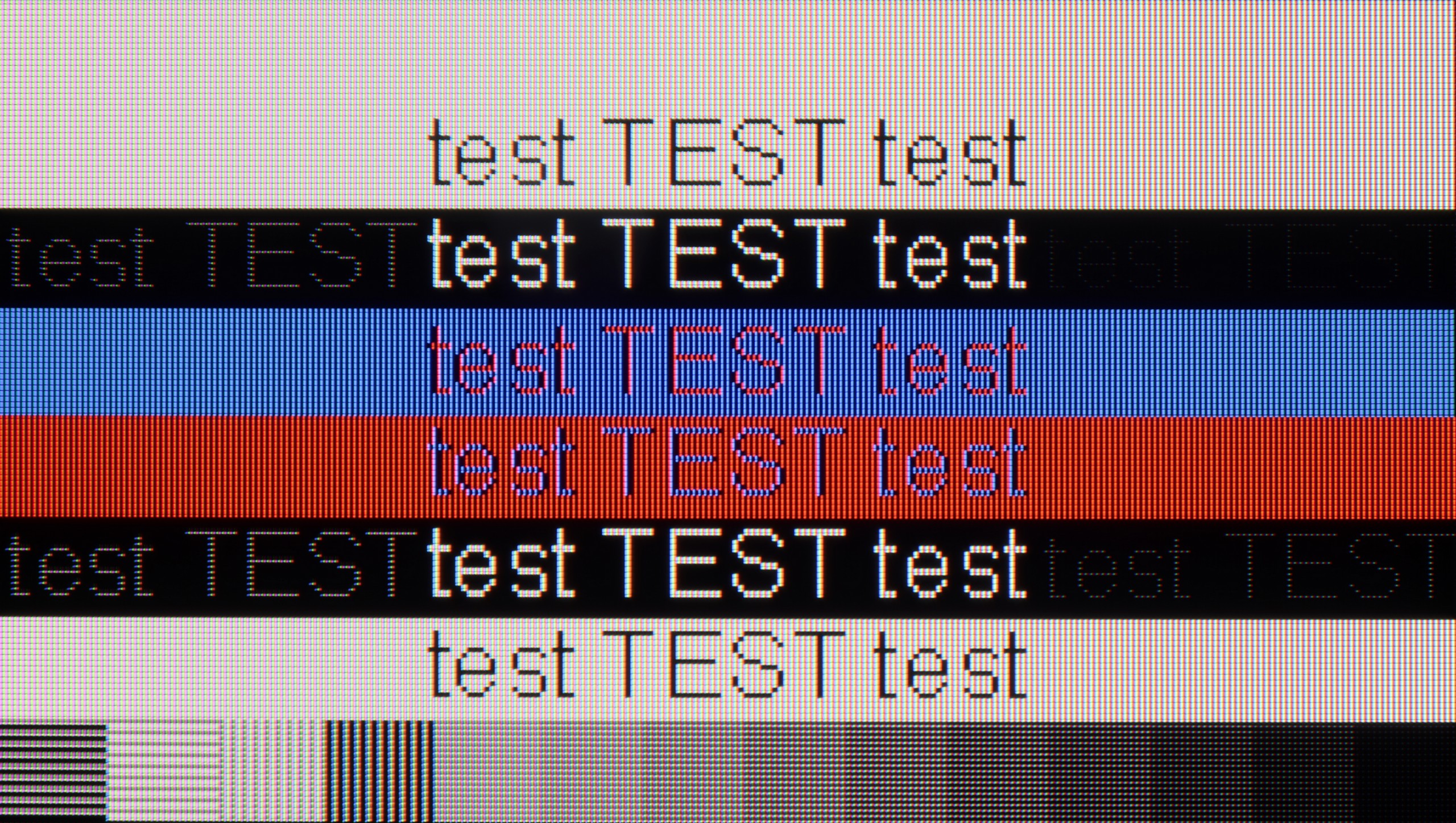
Xiaomi S MiniLED 2025 is a good choice if we need a television for working with a computer. Fonts are very clear thanks to 4:4:4 chroma support, making it perfect for office work or browsing documents. It also performs excellently in gaming – high refresh rate, G-SYNC, and low input lag ensure smooth gameplay, which will satisfy most gamers.
Although playing on the Q8F is not particularly attractive — it lacks modes with lower resolutions and higher refresh rates, and there are issues with VRR (G-Sync) along with a matrix limited to 60 Hz — as a work monitor, the television performs excellently. The readability of fonts is at a very high level, so working with text or spreadsheets in Excel is a pure pleasure. In this regard, the Q8F can be a real alternative to a large office monitor.
Viewing angles
3/10
3.4/10
In terms of viewing angles, Xiaomi S MiniLED 2025 does not impress. This is a typical problem for VA panels, which, without additional coatings to widen viewing angles, do not perform well. The image begins to lose quality when watching the TV from the side – colors fade, and contrast clearly decreases. However, the advantage of VA panels is significantly better contrast compared to IPS panels, which, on the other hand, win in terms of wider viewing angles. This is a classic compromise where one has to choose between deeper blacks and a more versatile image seen from different places in the room.
The viewing angles on the Q8F can be described as average, which stems from the use of a VA panel. When watching the TV straight on, the image looks very good, but as soon as you shift a bit to the side, it starts to fade and lose contrast. The colors gradually lose saturation, and black takes on a grayish hue. This is a typical limitation of this type of panel, and it's hard to expect miracles here. Compared to IPS panels, the difference is clear — although they are weaker in contrast, they maintain color consistency better at an angle. The Q8F performs best in a classic setup, where viewers sit directly in front of the screen. If you plan on watching with a larger group, with people spread out more widely in the living room, the effect may not be as satisfying.
TV efficiency during daytime
7.3/10
5.6/10

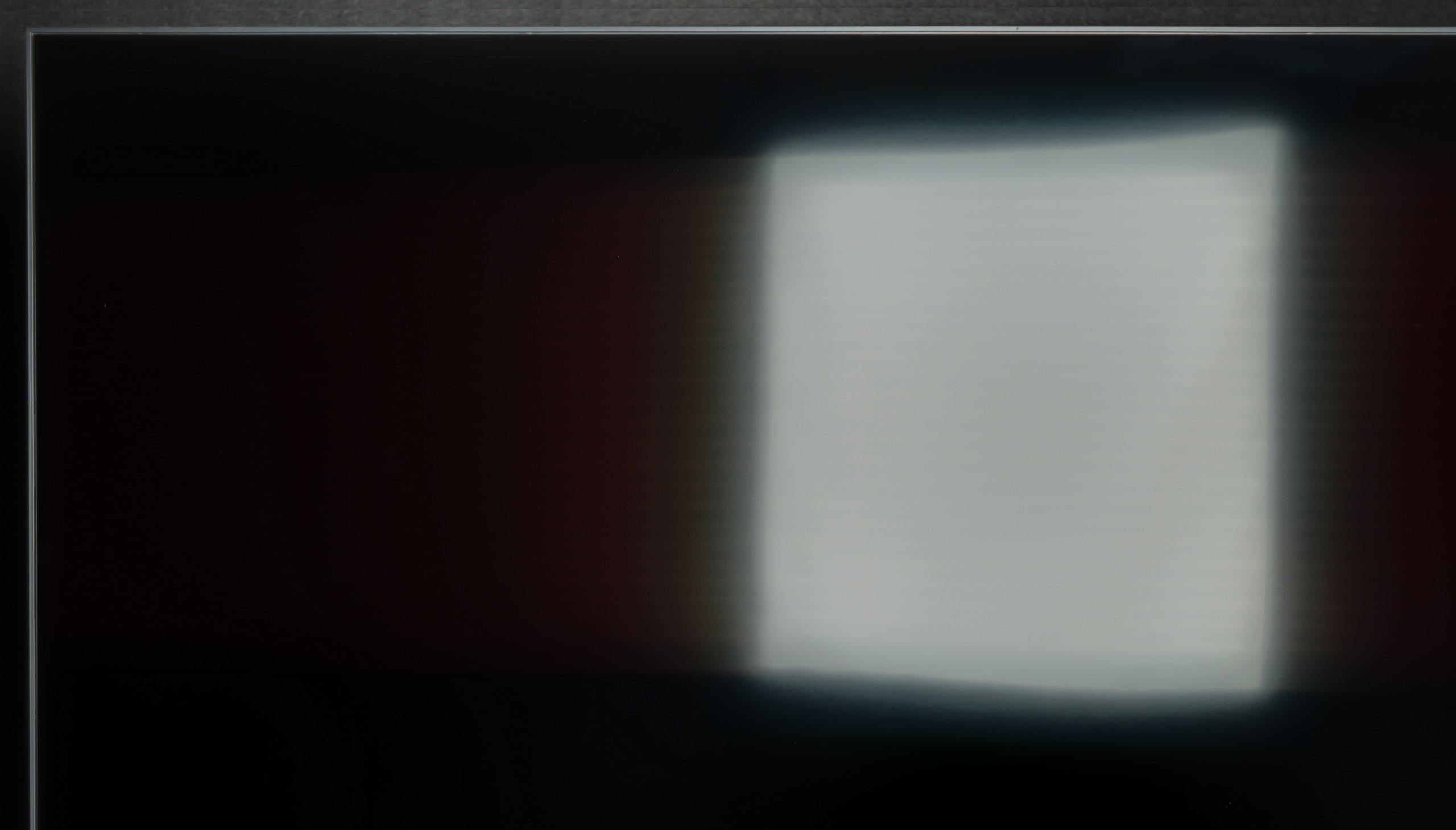


Matrix brightness
Average luminance SDR
Samsung Q8F: 430 cd/m2
Xiaomi S Mini 2025: 841 cd/m2
Xiaomi S MiniLED 2025 is equipped with a satin coating on the panel, which averages out well in reducing reflections. On the screen surface, one can notice light reflections, which can be somewhat distracting in brightly lit rooms. However, the key element that saves this television in daytime use is its brightness. With a value of 841 cd/m², the screen performs well even in very sunlit interiors. This is more than sufficient for comfortably watching television, movies, or sports events. Importantly, the television also handles more demanding materials, such as winter sports, where the dominating white can pose quite a challenge for other televisions. Here, Xiaomi definitely delivers.
The Q8F performs quite well during the day. Its brightness hovers around 450 nits, which proves to be sufficient for moderately bright living rooms. It is not a television that will win the battle against sunlight streaming directly through the window, but under typical home conditions, the picture remains clear and appealing. A major plus is the satin finish on the screen, which effectively reduces light reflections and allows for color saturation to be maintained even when the room is bright. As a result, watching series during the day or evening sports broadcasts with the lights on is not a problem. The Q8F does not aspire to be a cinema television in full sunlight, but as a daily screen in normal home conditions, it performs really solidly.
Details about the matrix
Subpixel Structure:

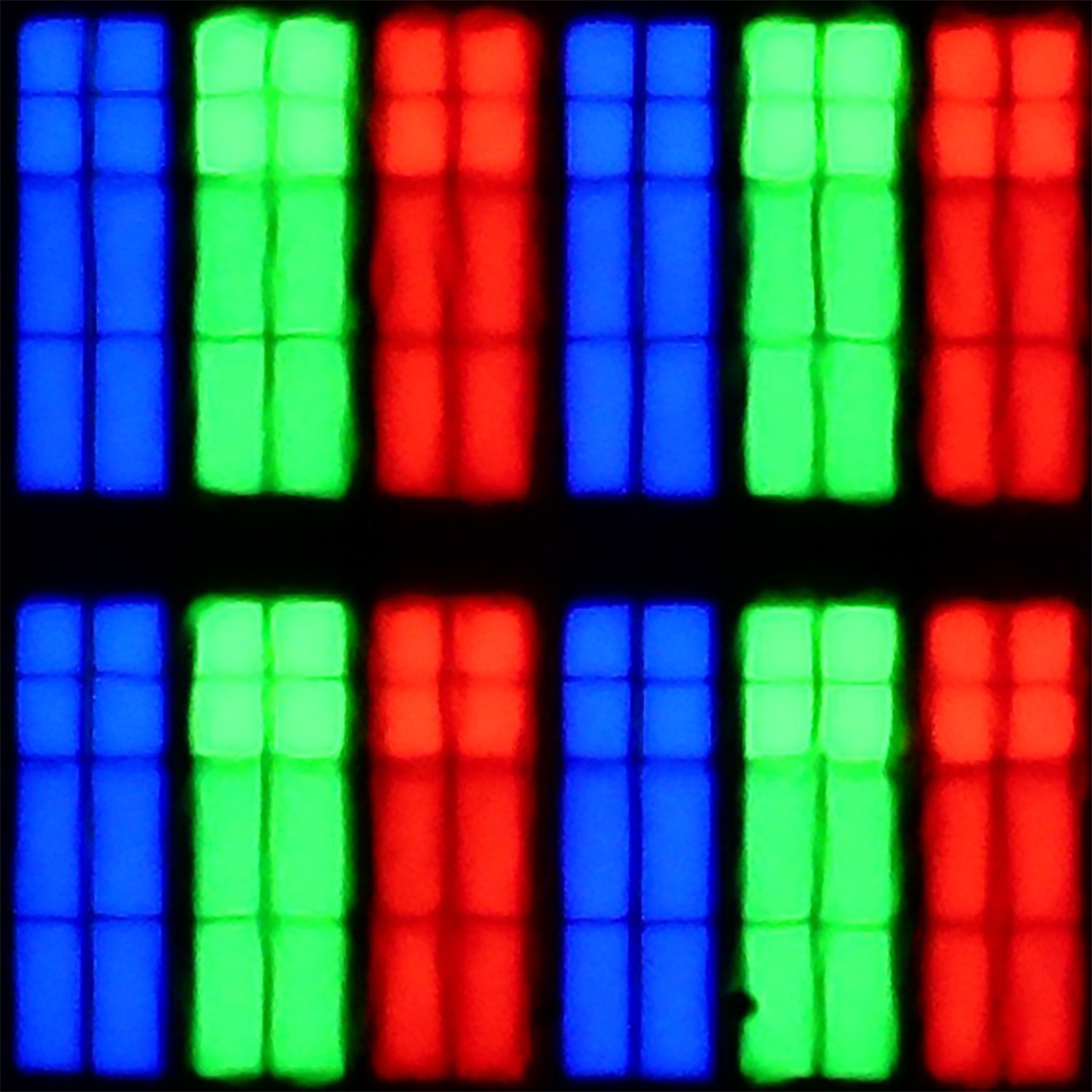
Panel uniformity and thermal imaging:

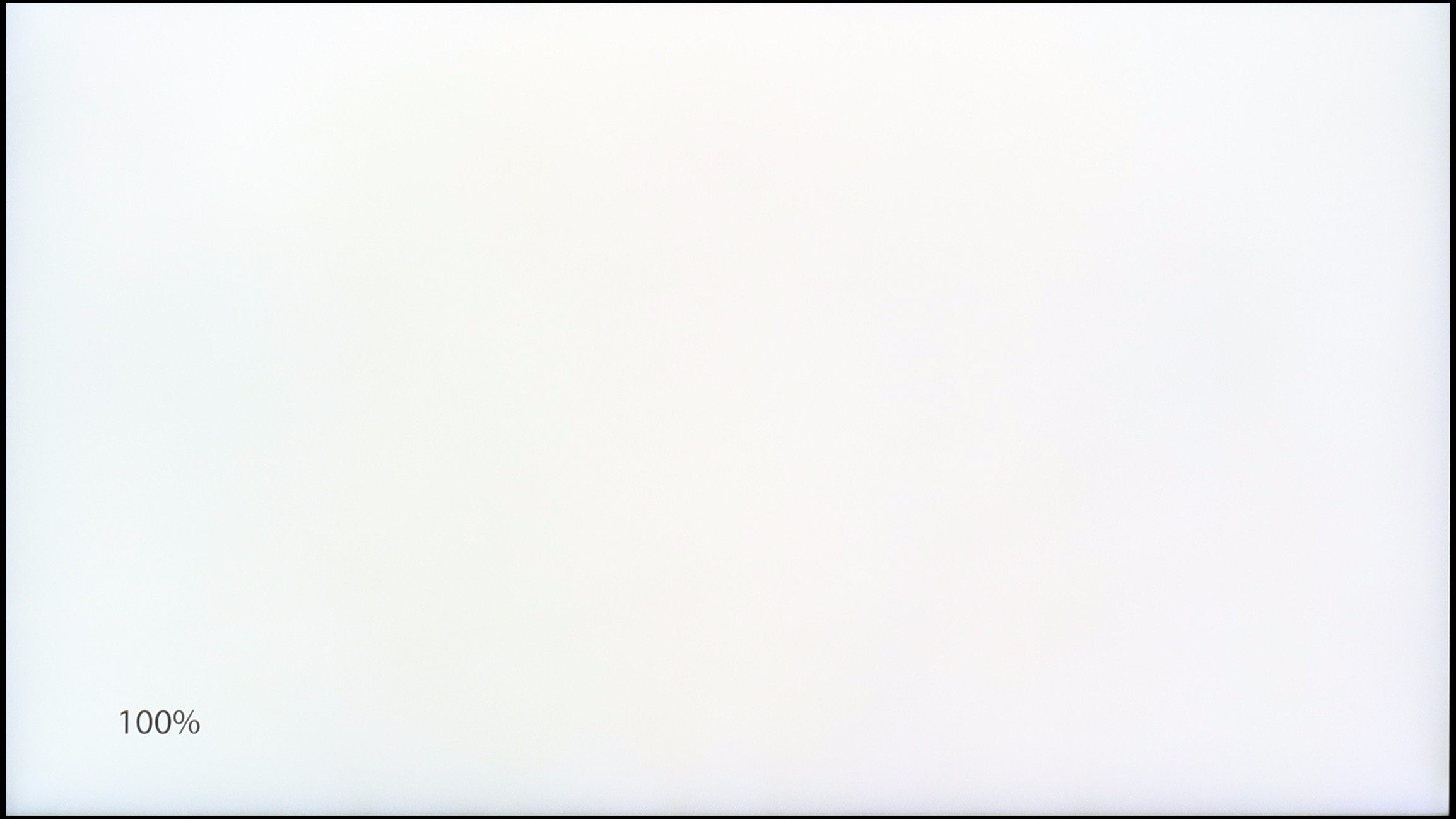
TV features
4.7/10
7.3/10
- HDMI inputs1 x HDMI 2.0, 2 x HDMI 2.1 48Gbps3 x HDMI 2.0, 0 x HDMI 2.1
- OutputsToslink (Optical audio), eARC (HDMI), ARC (HDMI), Mini-Jack (Headphones)Toslink (Optical audio), eARC (HDMI), ARC (HDMI)
- Network InterfacesWi-Fi 2.4GHz, Wi-Fi 5GHz, Ethernet (LAN) 100MbpsWi-Fi 2.4GHz, Wi-Fi 5GHz, Ethernet (LAN) 100Mbps
- TV receptionDVB-T, DVB-T2, DVB-S, DVB-S2, DVB-CDVB-T, DVB-T2, DVB-S, DVB-S2, DVB-C
Classic features:
- Recording to USB (terrestrial TV)
- Recording programming
- Picture in Picture (PiP)
- RF remote control (no need to aim at the screen)
- Backlit remote control
- Teletext
- Audio only mode
- Bluetooth headphones support
- Simultaneous Bluetooth headphones & TV audio
Smart features:
- AirPlay
- Screen mirroring (Windows Miracast)
- Voice search
- Voice search in native language
- Ability to connect a keyboard and mouse


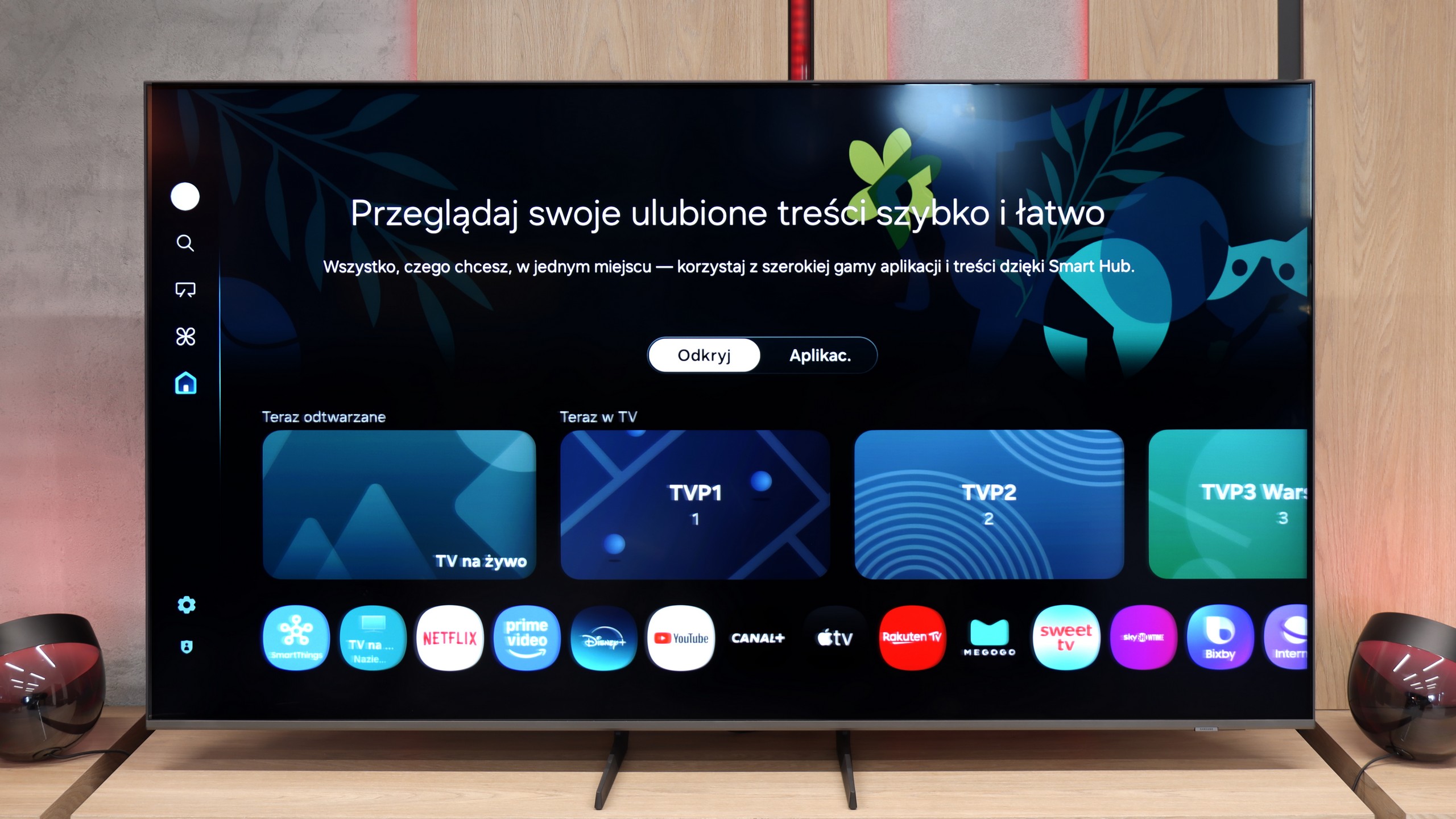
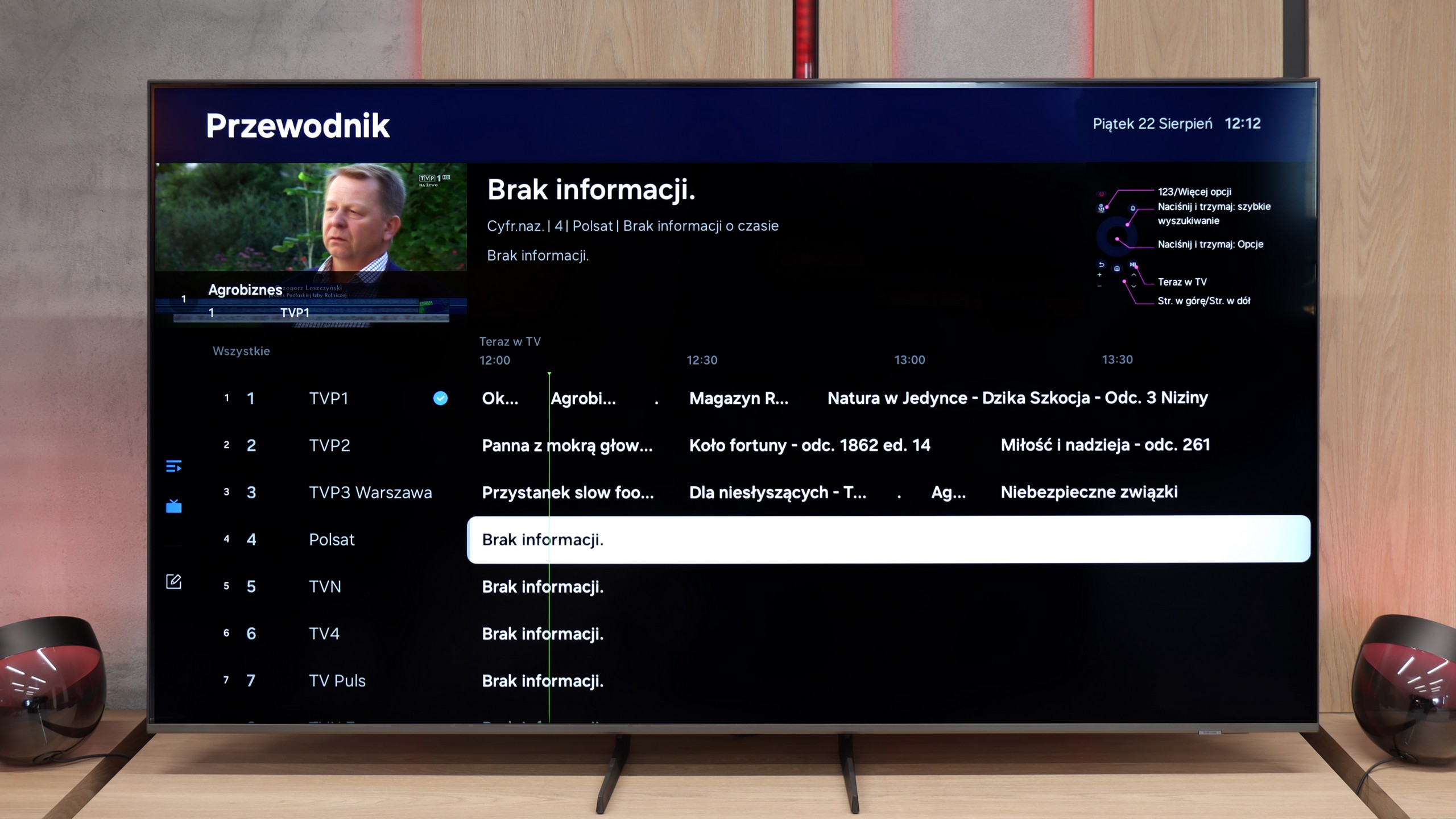
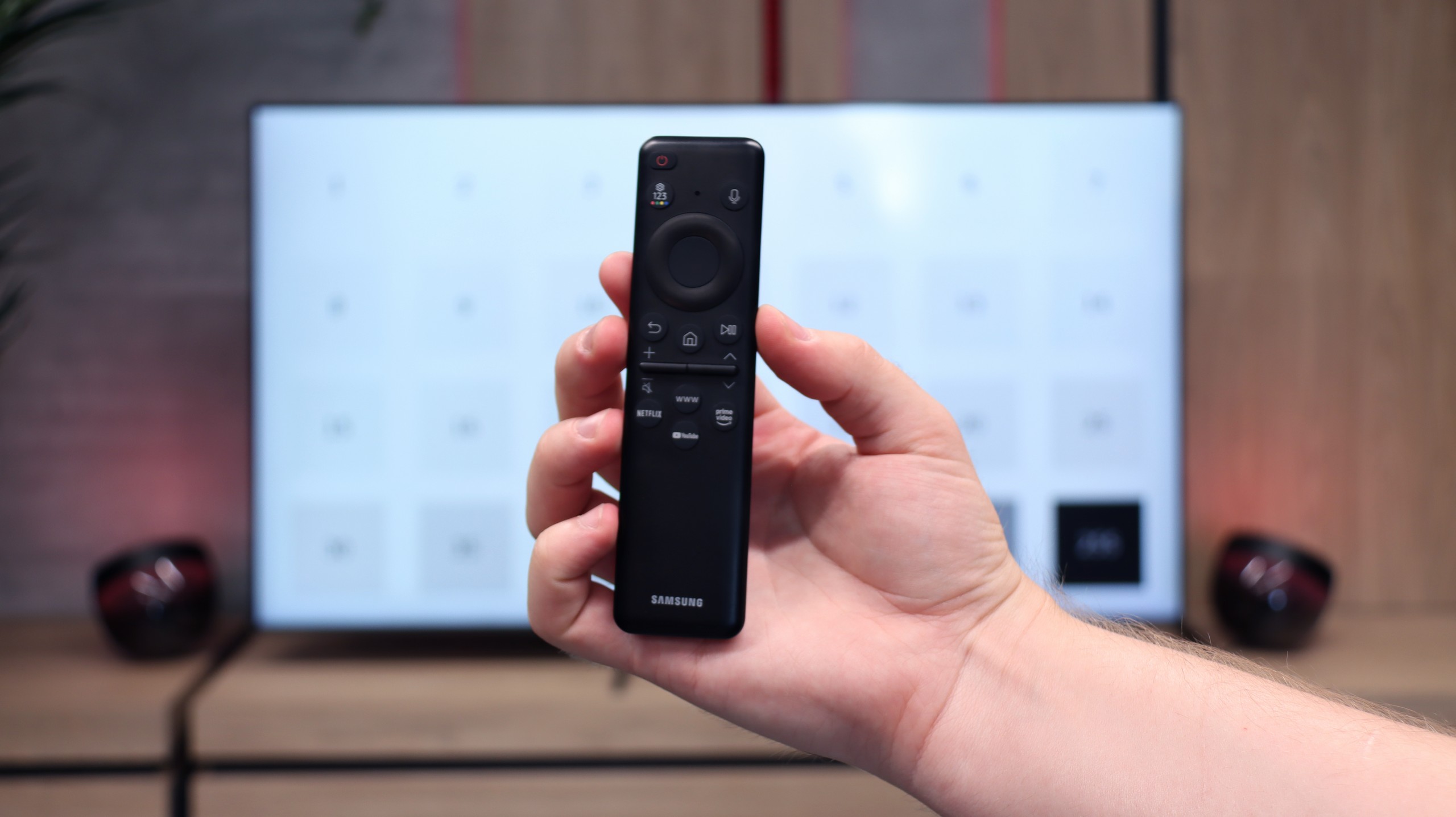
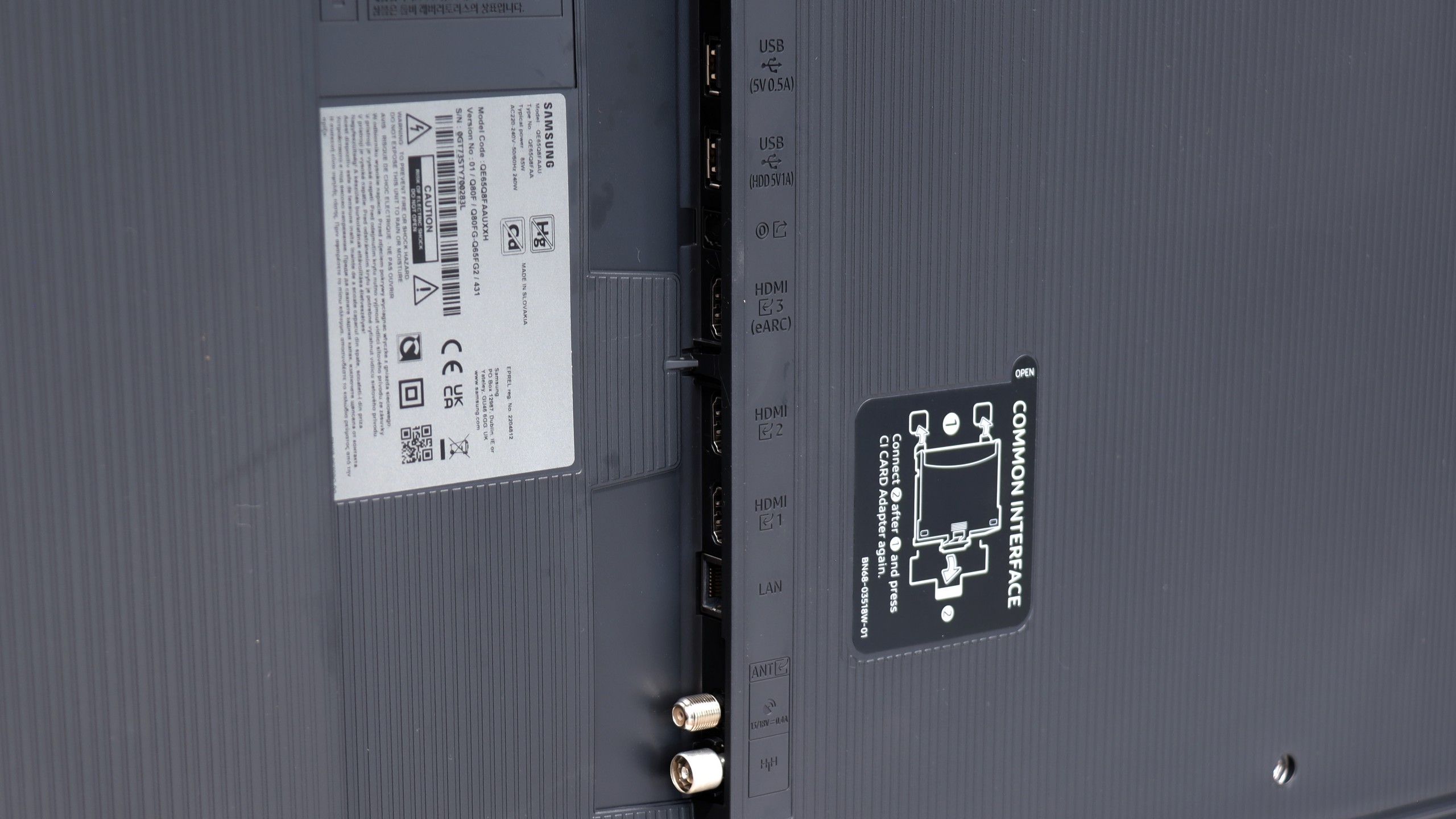
Xiaomi S MiniLED 2025 is a television that stands out thanks to the Google TV system. It offers access to the most popular streaming services, music applications, and various useful features that significantly enhance everyday use of the TV. For those who like personalization, the system also provides plenty of configuration options.
The built-in voice assistant works smoothly – we can not only control the TV with it but also ask about the weather forecast or set a reminder for the next day. Unfortunately, we noticed during testing that some functions have trouble translating into Polish, which can be frustrating, especially for those less proficient in navigating the settings. Despite this, the overall impression is very good, and minor shortcomings can be addressed in updates.
The device handles connectivity well. Wireless connections with Windows computers or Apple devices are smooth, and thanks to Bluetooth, we can easily connect headphones, keyboards, or other accessories. The remote is simple and comfortable – it works from any position, so aiming at the screen is not necessary. However, there are certain shortcomings. If someone often uses traditional television, they may miss the recording feature from tuners or the PiP (picture-in-picture) option. This slightly limits capabilities, but for those focused on streaming and modern features, it shouldn't be a significant problem.
Xiaomi compensates for these shortcomings with an excellent operating system. Google TV is one of the most advanced and intuitive systems available on the market, which makes the TV really perform well in everyday use.
SmartTV Features: Tizen
In terms of smart features, the Q8F is on par with what Samsung has accustomed us to. On board, we have the Tizen system – fast, intuitive, and well-integrated with other devices. AirPlay, screen mirroring, and simple voice commands work without issues, so the basics are perfectly covered. Additionally, there’s SmartThings, an app that turns the TV into the center of the home ecosystem. You can connect a washing machine, vacuum cleaner, bulbs, or speakers and control everything from one place, including the TV. There’s no shortage of apps within Tizen for watching movies or series either – Netflix, YouTube, Disney+, and Prime Video are readily available. However, it’s worth remembering that Tizen is a closed system, so anyone hoping to install less popular programs may be disappointed.
Classic Television
Classic television fares worse. The Q8F simply serves as a screen here – it will display the image, but we won’t find additional features like USB recording or PiP mode. The remote is small and minimalist. It looks modern, can be charged via solar batteries on the back cover, or through USB-C, but it's important to note that it may not appeal to everyone – especially older users may miss traditional buttons. However, it must be honestly admitted that Samsung has consistently directed its TVs (as well as competitors, who have copied some ideas from them) towards smart home integration, rather than equipment "for grandma and grandpa." Given the immense popularity of the brand, it can be assumed that most users, even older ones, have already grown accustomed to the fact that the era of remotes with a whole range of rubber buttons is slowly coming to an end.
Playing files from USB
7.3/10
9.1/10
Supported photo formats:
Maximum photo resolution:

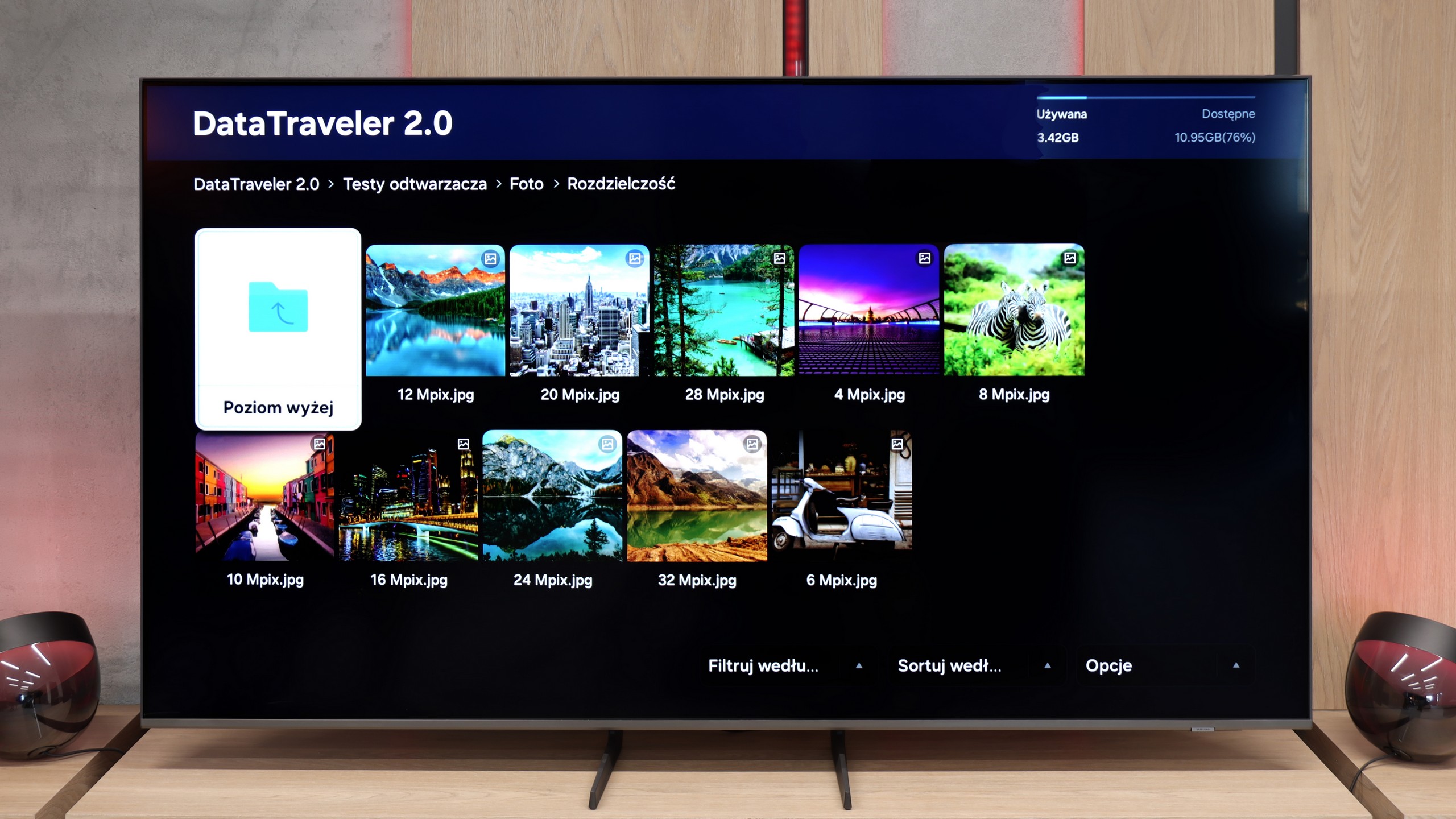
The basic file player in Xiaomi S MiniLED 2025 fulfills its task for simple video materials. However, a noticeable drawback is the lack of support for Polish diacritics, which can be problematic for people using subtitles.
Fortunately, the presence of the Google TV system provides an easy way around this limitation. It allows you to install alternative file playback applications that handle Polish characters and offer much more advanced options. As a result, the limitations of the built-in player are not as burdensome as one might think.
Samsung Q8F handles playback of files from USB quite efficiently. It supports almost all popular video formats and photos, so you can easily upload a holiday movie or a family album. There are occasional exceptions for less popular photo formats, but the most important JPEG works perfectly, which will be crucial for most users. It's just a shame that Tizen does not allow for the installation of alternative players like VLC. Then even less popular formats would not pose any problem.
Apps
9.6/10
8.7/10














































Sound
6.8/10
6/10
- Maximum volume-84dB
- Dolby Digital Plus 7.1
- Dolby True HD 7.1
- Dolby Atmos in Dolby Digital Plus (JOC)
- Dolby Atmos in Dolby True HD
- DTS:X in DTS-HD MA
- DTS-HD Master Audio
Xiaomi S MiniLED 2025 sounds really pleasant and even offers a slight bass, reminiscent of the audio known from the lower model, the A Pro 2025. The sound is well balanced, making movie watching or music listening comfortable, even without additional audio equipment. Interestingly, the TV seamlessly supports audio formats such as Dolby Atmos and the less common DTS:X. This allows you to connect a home theater system or soundbar and enjoy spatial sound without any difficulties. A nice addition is also the presence of a standard speaker jack.
The sound on the Q8F can be described as acceptable. You can hear a slightly defined bass, but it is really minimal – the slim design of the TV simply doesn't allow the pair of 2 × 10 W speakers to spread their wings. This is a typical scenario for most TVs: if someone cares about truly cinematic experiences, it's worth considering a soundbar. Samsung has a really wide range in this category across various budgets, so it's easy to find something suitable. The TV itself will work for watching traditional television and series from time to time, but you shouldn't expect much more in terms of sound excitement.
Acoustic Measurements
No acoustic data
84dBC (Max)
75dBC


